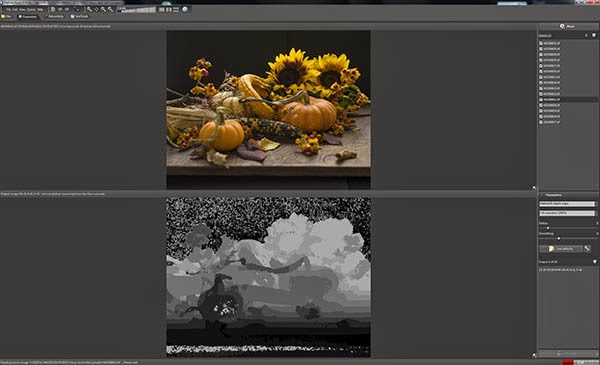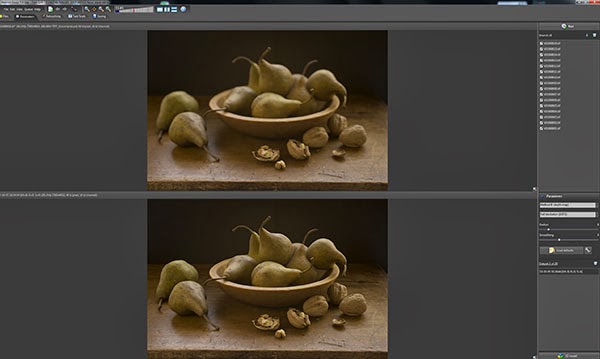Focus stacking is the technique of taking a number of separate exposures of the same scene, where each image is focused at a different point from front to back. The images are later combined (stacked) and software is used to combine the focused areas of each image into one image. The resulting image has a depth of field that would be impossible to achieve otherwise, even at the maximum closed aperture of a lens.
Focus stacking can be accomplished by aligning and combining the individual photo layers in Photoshop, however the best results are achieved using a software program called
Helicon Focus which is designed for this specific purpose.
Focus stacking works best with inanimate objects. The camera must be on a tripod and it is best to use a cable release. Any movement of the camera between exposures will ruin the outcome. Try to keep the increments between each exposure evenly spaced out with only a slight move in focus adjustment between them. Better to have more layers than less.
I find it best to choose an aperture that takes advantage of the sweet spot of the lens. That would usually be f/5.6 or f/8. I was working with a 50mm macro lens for these still life images and used f/5.6. With a much longer focal length lens I might have opted for f/8.
Focus stacking in Photoshop is a simple process, but the outcome is not nearly as complete as it is using Helicon Focus. In Photoshop bring all of your images as new layers stacked on top of one another. Then select all of them and go to Edit -> Auto-Align Layers. After that step ends, go to Edit->Auto-Blend Layers. The blending technique is similar to Photoshop's automated panorama assembly process. The results will probably leave some out of focus areas that you will have to tweak manually. That is because the masking method Photoshop uses for combining its layers is not as specifically geared to isolating areas of sharp focus, as is the Helicon Focus software.
 |
| Helicon Focus works buy stacking each focus layer with a series of layer masks like the one shown on the bottom of this screen capture. On the upper right is a list of the images being combined with the current one highlighted. |
The procedure in Helicon Focus is very simple. Simply load the images you want to combine, press "run" to start the software, and sit back and watch it happen. Even with full 16-bit depth it only took a few minutes for each of the sample shown here to be assembled.
 |
This photo is composed of 16 separate exposures with focus points beginning along the front edge of the table and ending on the back edge. They were combined in Helicon Focus to create one photograph with everything in focus.
Click here to download a high res version of this image. |
The two images below show the beginning and ending focus points of the 16 exposures that were combined to create the photo above.
 |
| Beginning focus point. |
 |
| Ending focus point. There were 16 separate images in all, each focused at a different spot between the two shown above. The exposure for each image was f/5.6. |
 |
| The bottom half of the screen shot of Helicon Focus shows the completed, stacked image. |
 |
| Sometimes you need to use trial and error to determine the exact aperture and the increment between the focus layers. In the close up photo above you can see a soft halo effect from a residual soft focus area around the sharper part of the leaf. Click here to download a high res version of this file. |
For further information on the Helicon Focus, you can visit their website where the software can also be purchased and downloaded.








No comments:
Post a Comment